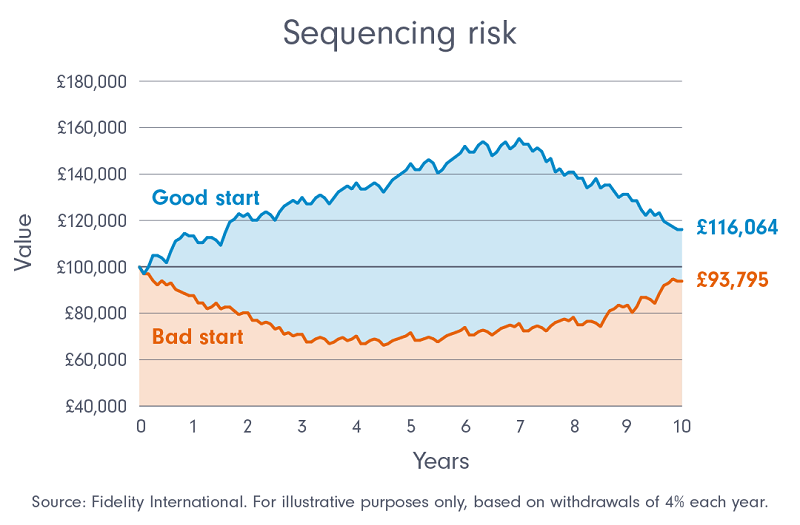Understand what sequencing risk is
The theory
While you've been saving for your pension, you've probably not worried too much that your investment returns vary from year to year. After all, time was on your side. But once you're ready to retire, the order in which your returns occur matters more as it could lead to very different outcomes for you and your pension. This is sometimes known as 'sequencing risk'.
If you sell your investments when the price is low, you'll have to sell more of them to get the income you want (leaving less of your pot invested). On the other hand, when the price is high, you'll sell less which leaves more of your money invested - and gives your investments a greater chance of growing in your retirement.
How it works in practice
This example is for illustrative purposes only. Investment values can fall as well as rise and so outcomes can be different depending on market conditions. Charges would also apply and reduce any returns.
Let's say that over 10 years, your portfolio will earn an average annual return of 5%. Some years you'll get higher returns. Some years they'll be lower (perhaps even a loss). If you start to take an income when your investments are performing well, you won't have to sell as many investments to get the income you need. This will give you a 'good start' to drawing an income and you can see this on the graph in blue. Even though your returns fall in later years, you're still left with just around £116,064 in your pension pot.
If, on the other hand, you start to draw down when your investments aren't doing very well, you have to sell more investments to get the income you need. This is the 'bad start' shown by the orange line. By the time ten years have passed, your pot is significantly smaller than if you'd enjoyed the 'good start'.
It is important to note that these two examples use exactly the same illustrative investment returns but in reverse order. The difference is the timing of the good and the bad years.
This is why it's important to evaluate how your investments are doing when you start to take an income from your pension pot.





